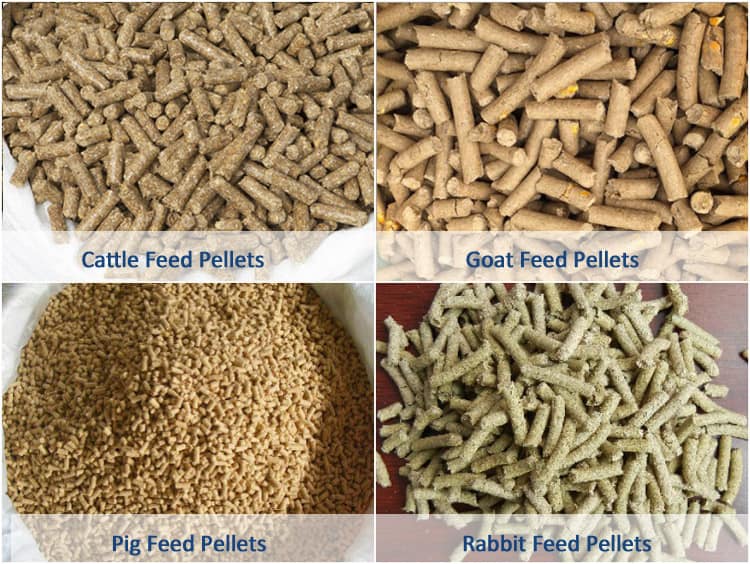
When selecting cattle feed pellets, there are several factors to consider. These include raw materials, size, and cost-benefit analysis. Additionally, die/roll specifications can affect pellet size. The size of the pellets is important to ensure that they are easily mixed with the final mix. In addition, you should choose pellets that are similar in particle size to those found in a whole corn kernel.
Contents
Raw materials
Raw materials for cattle feed should be purchased and stored in a safe and hygienic manner. They should undergo quality monitoring projects and an inspection programme in order to ensure that they are free from hidden dangers and are fit for use. It is also important to formulate relevant guidelines and procedures for the procurement, acceptance, unloading, storage, and processing of raw materials.
Cattle feed is usually made from a compound mix of different ingredients. The main components are raw materials, formula, and machinery. The cattle feed is then manufactured in pellet form. It contains highly concentrated ingredients that can satisfy the needs of cattle in different growth stages. It is produced by combining moisture, heat, and pressure.
Size of pellets
Animal studies have revealed that the size of pellets may affect the consumption of cattle. However, the evidence is conflicting, and some studies contradict each other. Some animals prefer larger pellets, while others don’t. There isn’t enough evidence to draw firm conclusions. Nevertheless, animal studies can inform feed manufacturers and the animal-keeping community. By using these data, farmers can improve the welfare of their livestock.
The size of pellets for cattle feed can have a profound effect on the nutrient content of the ration. Larger pellets can increase the level of gelatinised starch in the grower diet, while smaller pellets can reduce the overall nutrient content. Aim for pellet sizes that are similar to the average grain kernel size. Pellets that are too large can separate from the final mix. A one-inch diameter pellet is best for cattle fed on the ground. However, it is not suitable for calves.
Cost-benefits
Pellets offer a variety of advantages for cattle feed. They can improve feed conversion rates. These benefits can help you recover the cost of pelleting the feed. A high feed intake also leads to increased litter weaning weight and improved reproductive performance. In addition, pellets require fewer resources and are more environmentally friendly than mash.
Pellets for cattle feed can be made from many different ingredients. For example, cereal products, legume seeds, and oleaginous plants are excellent sources of protein. Pellets made from these materials can be easily handled and fed to livestock.
Die/roll specifications
Pellet mill die/roll specifications are a critical element in determining the quality of cattle feed. The die/roll combination must be able to achieve the right blend of pelleting properties and specific energy consumption. To help you choose the right die/roll combination for your pellet mill, here are some guidelines:
First, you should know the die/roll combination’s thickness. Die thickness and hole diameter are closely related. You should also know the speed of rotation. The speed at which the feed is introduced also affects the moisture-to-temperature relationship and affects the final pellet quality. Second, the amount of steam introduced into the feed should be balanced to ensure that the drive motor operates at its rated amperage. Lastly, the amount of water that enters the feed should be adjusted to maintain the correct ratio.
Third, the die/roll should be capable of handling soft feed mixtures. Pellets should have a bulk density of 0.5-0.6 g/cc. A higher die speed will result in harder pellets. Increasing the steam-conditioning temperature and time will also increase pellet quality.
Nutrient analysis of straw pellets
Nutrient analysis of straw pellets for livestock feed can help improve feed quality and reduce costs. Several factors need to be taken into account in the analysis. First, the amount of energy and protein present in straw must be increased to meet the requirements of breeding cattle during cold weather. Secondly, cattle in their last trimester of pregnancy need higher energy and protein supplements. Third, straw can contain residues of pesticides that may harm livestock, making it important to make sure that the feed does not contain these chemicals.
The price of straw bales is USD 0.11 kg-1, excluding transport costs (about USD 0.0355 kg-1 per 1000 km). Grinding straw requires a cost of approximately USD 0.1 kg-1. Using an existing rice husk pelletizing system, a cost-benefit analysis of straw pellets for cattle feed was performed.



